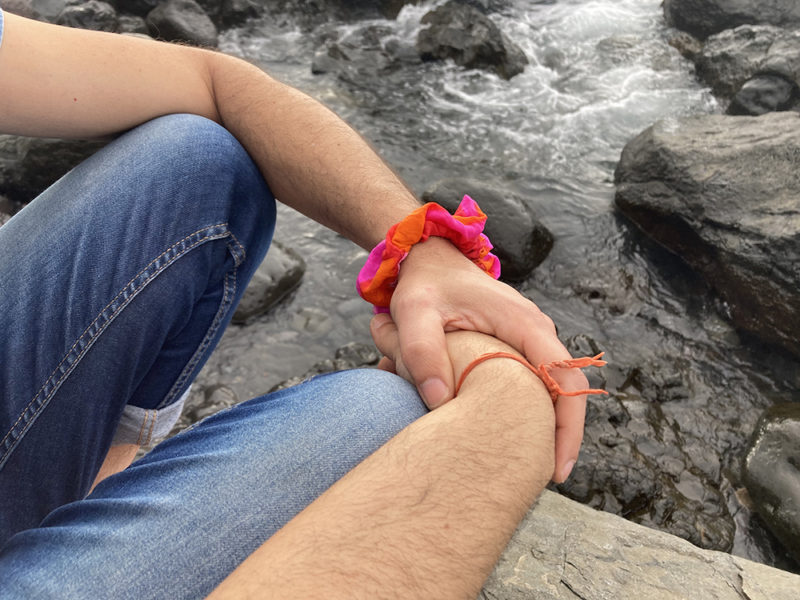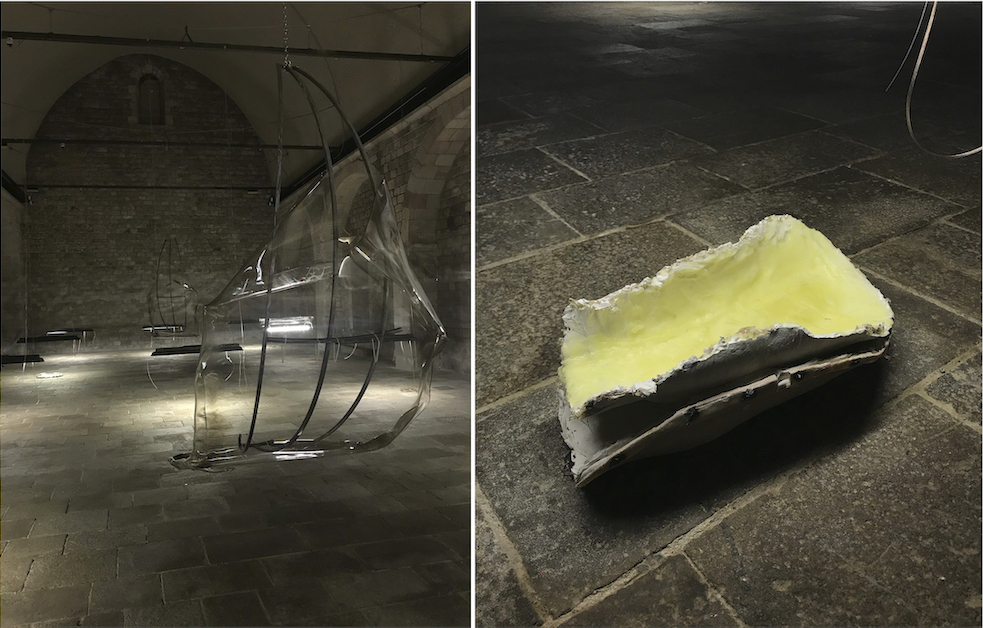Search
To search for an exact match, type the word or phrase you want in quotation marks.
A*DESK has been offering since 2002 contents about criticism and contemporary art. A*DESK has become consolidated thanks to all those who have believed in the project, all those who have followed us, debating, participating and collaborating. Many people have collaborated with A*DESK, and continue to do so. Their efforts, knowledge and belief in the project are what make it grow internationally. At A*DESK we have also generated work for over one hundred professionals in culture, from small collaborations with reviews and classes, to more prolonged and intense collaborations.
At A*DESK we believe in the need for free and universal access to culture and knowledge. We want to carry on being independent, remaining open to more ideas and opinions. If you believe in A*DESK, we need your backing to be able to continue. You can now participate in the project by supporting it. You can choose how much you want to contribute to the project.
You can decide how much you want to bring to the project.

The stones are too hard for my feet. I put on my flip-flops and walk towards the water, still bright, but with the ability to darken the large rocks around it as soon as it gets them wet. I am in a puddle, not a very deep one, in which the water does not stop moving despite the hard rocks prevent the force of the waves from reaching me. The water maintains a tireless sway that moves me from side to side, in a limited drift. I can lean on the firm rock with my hands so as not to go beyond what is desired, but my feet, which also reach the ground, meet the same rock, this time very slippery, which makes me unable to hold any kind of balance. The rock is hard and slippery at the same time, it holds me down and throws me off balance. The water comes in full force, yet immediately loses it. Fragility and stability. Elena comes in then. She is wearing her hair tied with a pink, red, purple and orange scrunchie. She takes it off before coming in and tosses it to Oscar —whom we barely know—, who is sitting on a big rock, dressed and with no intention of swimming. Oscar puts the scrunchie on his arm so as not to lose it. An unforeseen assembly. Elena tells me that she has just understood something in the work of Lucía C. Pino.

Going back or reaching the bodies as an “unavoidable” conversation[1]Las posibilidades de la escultura (The possibilities of sculpture). Interview to Lucía C. Pino by Alexandra Liesse in Metal Magazine, 2021. Urgently placing bodies in the centre. In Makebelieve Neuromancer, the exhibition by Lucía C. Pino that can be seen until the 30thof May at La Capella (Barcelona), the matter explicitly takes shape. A forceful gesture that we had not seen before but that, far from being forced, we could get to intuit. In Non-Slave Tenderness, the exhibition that Lucía carried out in 2018 at Espai 13 of the Fundació Miró, organicity was already very present. The sculptures, conceived as living bodies, were hybrid objects, typical of science fiction, which allowed us to think about other possible natures. In Full Fantom Five, a series of sculptures produced in 2020, she also pointed to the use of fiction as a strategy to explore the possibilities of a non-androcentric knowledge inscribed in materials. The pieces of iron-residue, recovered from a previous piece, wire fired in coal until a state of matter in which it was possible to dent and twist the iron was achieved, in order to seek for apparently unforeseen properties in which the normative structure was destabilized. A polyurethane fabric was added to these —like a pair of colourful and glittery leggings—, that suspended the iron pieces from the ceiling, testing the elasticity of the material while, in some way, pointing out the queer power that was given in the link. I think about the scrunchie on Oscar’s arm. Again, fragility and stability, a structure in which each material acquires meaning when being in contact with another.
Given the ancient use of the exhibition space —La Capella was the chapel of the Old Hospital—, it is especially appropriate to recover the biblical verse —fundamental exercise in fiction— “the Word became flesh”, a phrase that, on the one hand, generated a duplication between “matter” and “spirit” and, at the same time, gave the word the ability to construct truth. In this duplicity, the body becomes a form, a receiver, of a truth that is conferred on it from the outside. At the same time, “the Word became flesh” points to a transmutation of matter. Outside of the Catholic liturgical space, no one would believe in the meaning of the verse, but “in the context of the ritual expression of faith, the transformation of agencies by which the word becomes flesh is authorised”[2]María Ptqk, “Física Mágica” (Magical Physics) in Cuerpo y ficción (Body and Fiction), Dilalica, Barcelona, 2020.

The transmutation of matter, the transit, are present concepts in Makebelieve Neuromancer. Lucía investigates around viscous substances which solidify, which crystallise; on thermal processes that allow them to compact. Materials are taken to their most ductile point, exploring their limits and forming new subjectivities —assemblies, relationships, ties, kinships[3]Donna Haraway, Staying with the Trouble: Making Kin in the Chthulucene, Duke University Press, 2016—, new modes of existence. The bodies that we see expand canonical definitions, they are prosthetic, they assemble, they fit together, they are possible. Binarism goes into crisis. An idea that is reiterated and emphasized with the Smoke Machine, Lion and Jeep performance that Roxman Gatt carried out on the 22nd of April. Roxmann, in half a sports shorts and half a hakama, starts by exercising his body as if he were in soccer training. Not so long ago he posted a photo of his adolescence on social media in which he practiced this sport. I think that this first exercise is part of a reunion with his past self. Maintaining the knowledge by similarity of the scrunchie and the polyurethane of Full Fantom Five, when I was watching Roxmann I could not help thinking of myself, a soccer-loving girl, and of childhood as a time when, unknowingly, I allowed myself to perform masculinity —perhaps it was my most ductile and malleable moment as matter, which I am too. The text they gave us upon entering reads: “I want to talk to my younger self, show him the way to a better place, where he could be charming ladies and dancing freely”. In Smoke Machine, Lion and Jeep Roxmann Gatt dances and seduces the pieces by Lucía C. Pino with intimacy and tenderness. A new bond —matter in contact with matter— that, once again, expands the possibilities of what is liveable.

| ↑1 | Las posibilidades de la escultura (The possibilities of sculpture). Interview to Lucía C. Pino by Alexandra Liesse in Metal Magazine, 2021 |
|---|---|
| ↑2 | María Ptqk, “Física Mágica” (Magical Physics) in Cuerpo y ficción (Body and Fiction), Dilalica, Barcelona, 2020 |
| ↑3 | Donna Haraway, Staying with the Trouble: Making Kin in the Chthulucene, Duke University Press, 2016 |

Marta Sesé researches and writes abour contemporary art. She lives in Madrid and works in arts publishing. She also co-manages the project Higo Mental: www.higomental.com
"A desk is a dangerous place from which to watch the world" (John Le Carré)